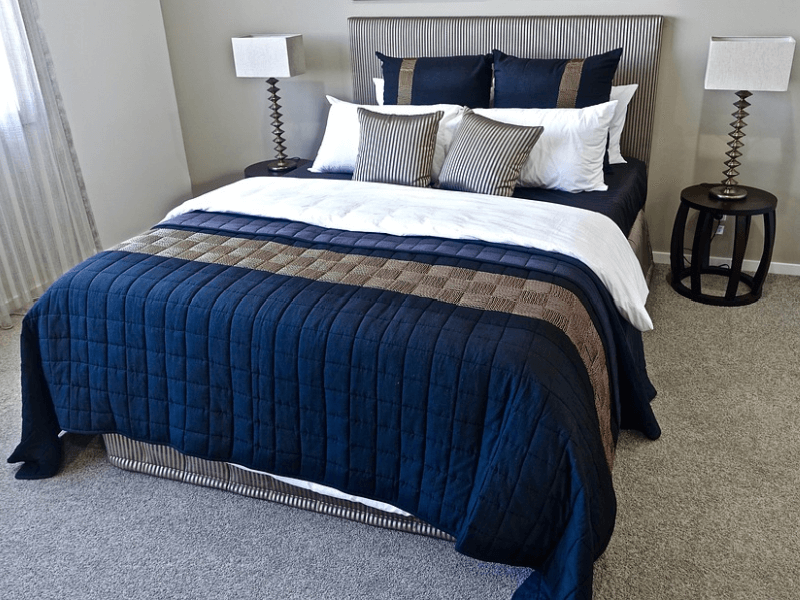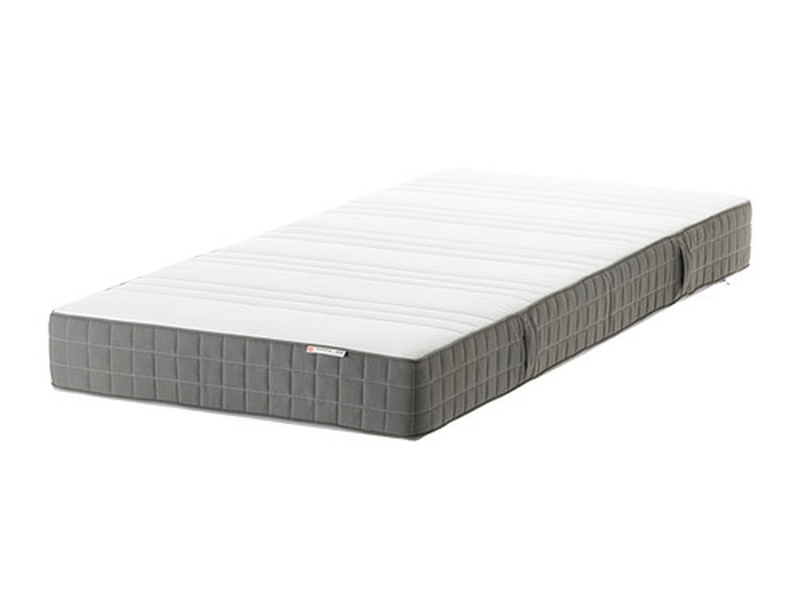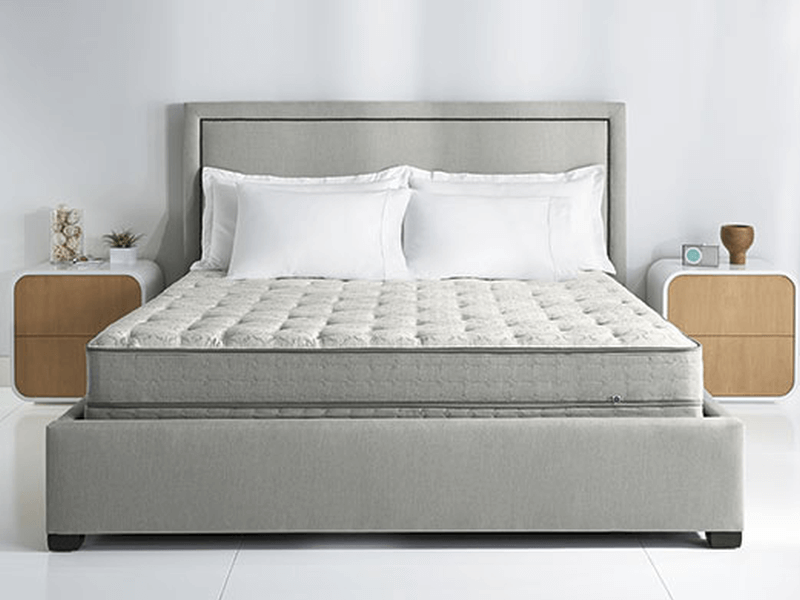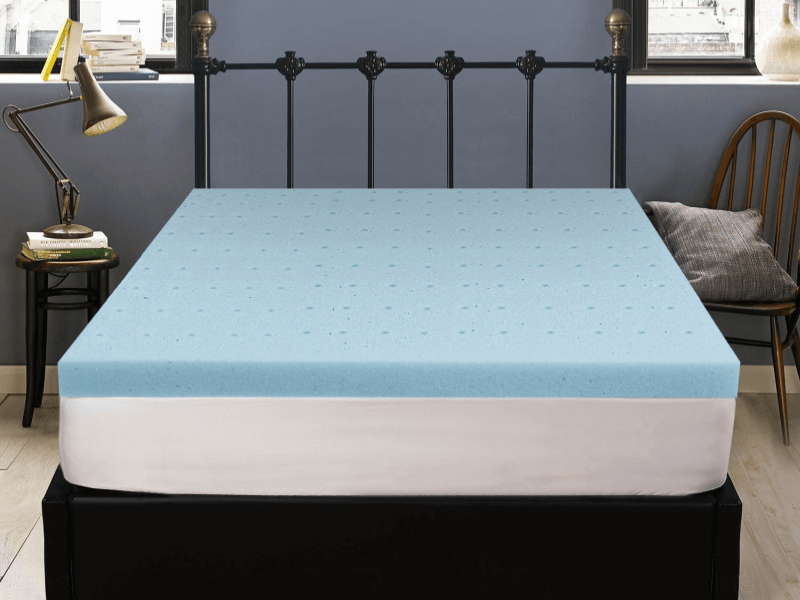Including the various hybrids and sub-types out on the market, there are currently more mattress types than you can count using both hands. Choosing the right one for you can feel like picking out a new smartphone, or even a car! Because you’re going to be using a mattress on a daily basis, it’s important to consider all the differences between mattress types, as well as small nuances and specifics that arise from each kind of material and design.

You don’t want to end up with an imperfect fit. The caliber and class of a mattress as well as its compatibility with your needs is one of the major factors of sleep quality. Below is a general rundown of the common kinds of mattresses: their traits, pros and cons.
The Innerspring Mattress
Sometimes called coil mattresses, innerspring models are one of the most traditional, accessible and versatile mattresses; maintaining a level of popularity throughout the decades. Using coils for support, they are the natural partner to classic box springs that are built similarly. However, innerspring mattresses come in wide variety of styles and firmness levels; and can work well with box foundations and platforms. Coil count is typically associated with increasing comfort, support and contour; but other factors, such as coil gauge, mattress padding, and upholstery, also play a part.
Pros
As mentioned above, one of the best thing about innerspring mattresses is that there’s a lot of different sub-types to choose from. This also means that the price range is significantly broad; you’ll be able to find a firmness level you like for an affordable price that won’t burn a hole in your pocket. Another positive is that these mattresses usually breathe better, and retain less transferred body heat. The springs and resulting bouncier nature of the mattress can also be a boon for overweight people who may find it easier to get out of bed with the added pushback. Fans of this feel may seek improved bounce and durability, and find it in a sub-type: coil on coil mattresses, which have an extra layer of microcoils on top of the innerspring mechanism.
Cons
Innerspring mattresses can age faster than other types, because they are more prone to sagging. It’s also not recommended for use with adjustable bed bases, because the springs won’t be able to handle constant angular bending. Overall, motion transfer can also be a problem. If this is an issue for you, consider a sub-type: pocketed spring mattresses, also called pocketed or wrapped coil. With these mattresses, each coil is unconnected from the whole and is individually wrapped; dramatically decreasing motion transfer and elevating support.
The Polyfoam Mattress
These mattresses—also known as polyurethane mattresses—are in the lowest tier of all the types that fall under the umbrella category of foam mattresses. The material is something you are most likely familiar with, as it’s what is used in most upholstered furniture. However, not all polyfoam mattresses are equal. There is a degree of variation here; differing levels of support, durability, and comfort depend on the material grades and the number of layers of polyfoam in each individual product.

Pros
Because the materials are inexpensive, the price of even the higher quality version of this kind of mattress tend to be more than affordable. The lightweight nature of polyfoam also means that on top of having a wider variety of shapes and sizes to choose from, transport and handling of these mattress is close to hassle-free. Motion transfer is also very much reduced, making these mattresses perfect for a shared bed on a budget.
Cons
Depending on the quality of the polyfoam used, durability may be a problem; the most inexpensive ones tend to flatten and get compacted over years of constant use. Temperature control and heat transfer are also an issues, as polyfoam traps heat; although you can take steps to deal with this by putting something over the foam or even using the right kind of bedsheets.
The Latex Foam Mattress
Created originally to outlast traditional innerspring mattresses, the latex foam mattress has been around since the 1960s. This foam mattress type is made out of natural, blended or synthetic latex foam. The natural kind of latex is made from rubber tree sap, and is very environmentally friendly; however a 100% natural latex foam mattress would be very expensive to make. This is why the first models were beyond the reach of the average consumer. Most commercial latex foam mattresses today are priced more reasonably, and use blended or synthetic foam—though some do include a top layer of natural latex.
Pros
The material provides great support. It is a lot more durable than polyfoam—some with an estimated usable lifetime of up to 30 years—and also traps a lot less heat and transfers a lot less motion. Because it’s also hypoallergenic and breathes well, it’s also a great choice for people with very sensitive skin and people living in areas that go through dramatic changes in weather or temperature.
Cons
Latex foam is more responsive than its younger cousin, memory foam. Should your preferences or needs swing closer to constant firmness, latex foam might be right up your alley. However, for maximum comfort—especially if you don’t sleep alone and may have a partner wanting a softer bed—you’re better off with a different mattress. A good compromise, without having to resort to two twin beds pushed together, would be to use a latex foam mattress topper (we’ll discuss these later).
The Memory Foam Mattress
Also called Visco Elastic foam, memory foam is a material that is unique in its ability to easily contour itself according to the shape of your body, while supporting you and distributing your weight evenly throughout its surface; making these mattresses ideal of people with aching joints, and restless sleeping habits. Mattresses are made out of several layers of foam—some of very high density—that help resist the tendency of foam mattresses to sag.

Pros
Similar to latex foam, memory foam is resistant to allergens; and it’s also not prone at all to bacteria or mold growth, or bug or mite infestations. This is why these two materials make great hospital, hotel and guest bedrom mattresses. These mattresses also help relieve common pressure points and help lessen pain; thereby lowering sleep disruption instances without resorting to a very firm and inflexible sleeping surface.
Cons
Earlier models of memory foam mattresses soften and conform to people based on body temperature and weight, which means that heat transfer can be a problem. Later models have addressed this issue; of particular note is the gel-infused memory foam mattress, which integrates a top layer of gel that allows for a cooling feel and increased airflow. This brings us to the next kind of mattress.
The Hybrid Mattress
This is exactly what the name entails: mattresses that combine different materials, resulting in a hybrid product. Typically a mix of innerspring and some type of foam, gel and some type of foam—or even different types of foam put together, as is very popular with the new, mattress-in-a-box types—hybrid mattresses represent innovation, technology and inspiration. Though it can be more difficult to predict off the bat how they will feel, you will find that the right ones not only perform better, but are also likely to be more budget-friendly. Instead of pros and cons, let’s go through some common hybrids below.
Innerspring and Latex Foam
The coil support system retains the bounciness and familiarity of the mattress feel, while the latex foam layer adds durability and helps lower motion transfer. Both materials breathe well and don’t trap heat. Latex foam also bring its hypoallergenic nature to the table.
Innerspring and Memory Foam
The traditional innerspring again brings with it the bounciness and the breathability, both of with memory foam doesn’t have. In turn, memory foam provides that unique kind of conformity and support. The thickness and density variations of the memory foam layer may affect the feel in different ways, though.
Polyfoam and Latex Foam
This is a great choice for people who are looking for maximum value for money. A polyfoam core will lower the cost, while still being a good partner for the other material: the more expensive, more durable, better quality latex foam. Some even include a memory foam layer to add pressure relief and more comfort. This hybrid mattress will last longer than a polyfoam mattress, and will likely be less expensive than a comparable 100% latex foam counterpart.
The Air Mattress
We don’t mean the blow-up mattress that you bring out whenever you have sleepover guests—although some new products of that type can withstand daily use. However, there are also high end air mattresses that are filled with air—the pressure of which you can adjust to control the firmness of the surface. Usually upholstered to look like a regular innerspring mattress, complete with the requisite foam or fiber layer on top, the chambers inside are hollow instead of containing coils. Bigger air mattresses meant for two people can often have two different firmness levels; each side can be separately controlled.

Pros
More than foam mattresses that already offer reduced motion transfer, air mattresses may be the best for sleeping partners with vastly different preferences. If one likes sleeping on a firm mattress and the other likes a softer surface, each gets what they want, resulting in less disruptions and better sleep quality for both. And because you control the firmness, as long as you find a reputable brand and choose a model with multiple air chambers, you can easily order an air mattress online without having to test it—although, if you happen to be near a physical store, you might as well.
Cons
The power to control the firmness can sometimes backfire; some settings can result in a surface so soft that you can actually hurt your back sleeping on it. However, you can also readjust your settings. Lower end products also have a tendency to act like those old blow-up mattresses; that is, apply a lot of pressure on one end, and the other is suddenly a lot firmer.
The Water Bed Mattress
Though most people remember the water bed as a trend from years past, there is still a small cult following for it, which is why they are still available today—though they are not very easy to find in physical stores. You’ll need to shop online for more options. These modern versions are typically rectangular chambers filled with water and covered with vinyl insulation—sometimes further topped by foam or fiber—which makes sure that the entire contraption is safe from leakage. The chamber can either be free-flow, or waveless with fibers inside to limit water movement; the former feels more like the classic soft water bed, while the latter a little firmer and provides more support. Like air mattresses, they are designed to look as much as possible like typical mattresses.
Pros
No matter how many issues water bed owners may have to deal with due to the uncommon material, there is one thing that everybody can agree on: Heat transfer is close to nonexistent. It’s just plain science. Far from trapping warmth that your body radiates as you sleep, water bed mattresses actually cool you down when you lie on them. Despite its wildly unconventional nature, most water bed mattresses can be used with normal platform beds and sturdier box foundations.
Cons
Even with a waveless chamber, motion transfer is a problem. This is not an ideal mattress for two; some people can even feel something akin to sea sickness due to a water bed’s wave-like undulations, which can only worsen the bigger the mattress is. And although you can theoretically control some of the firmness with the water level, it’s definitely not the best choice for people needing extra support.
The Mattress Topper
These products differ in size, durability and prices; and can come in just about as many types at mattresses themselves. Mattress toppers are known by many other names: pillow top mattresses, euro top mattresses, mattress pads, and more. While the specifics may vary, one thing remains the same: these are extra layers that are supposed to be placed on or attached to the surface of an existing mattress. Think of toppers as a way to create hybrid mattresses of your own, to an extent. Below are a few common kinds.

Pillow Top Mattress
This adds a fluffy, often quilted, comfortable layer on top of your actual mattress; which can come in handy, for example, if your mattress is brand new and still a little too firm for your taste. This eliminates the requisite break-in period.
Latex Foam Topper
Because latex foam is hypoallergenic and breathes well, this is a catchall solution for many mattress problems, especially if you don’t have the budget to replace your existing mattress yet. If your polyfoam mattress is hot or getting old and compacted, or if your skin feels itchy when you’re lying in bed, this is a great product to try.
Memory Foam Topper
This is commonly used in medical institutions to relieve pain and tension in certain patients without having to completely change all the beds to full memory foam mattresses; so it should work similarly for you.
Electric Mattress Pad
The classic electric mattress pad is better known in the UK and Commonwealth territories as an electric blanket; it’s basically a powered heating pad. Modern electric mattress pads have evolved to provide both ends of the temperature spectrum: they can proving both cooling and heating.